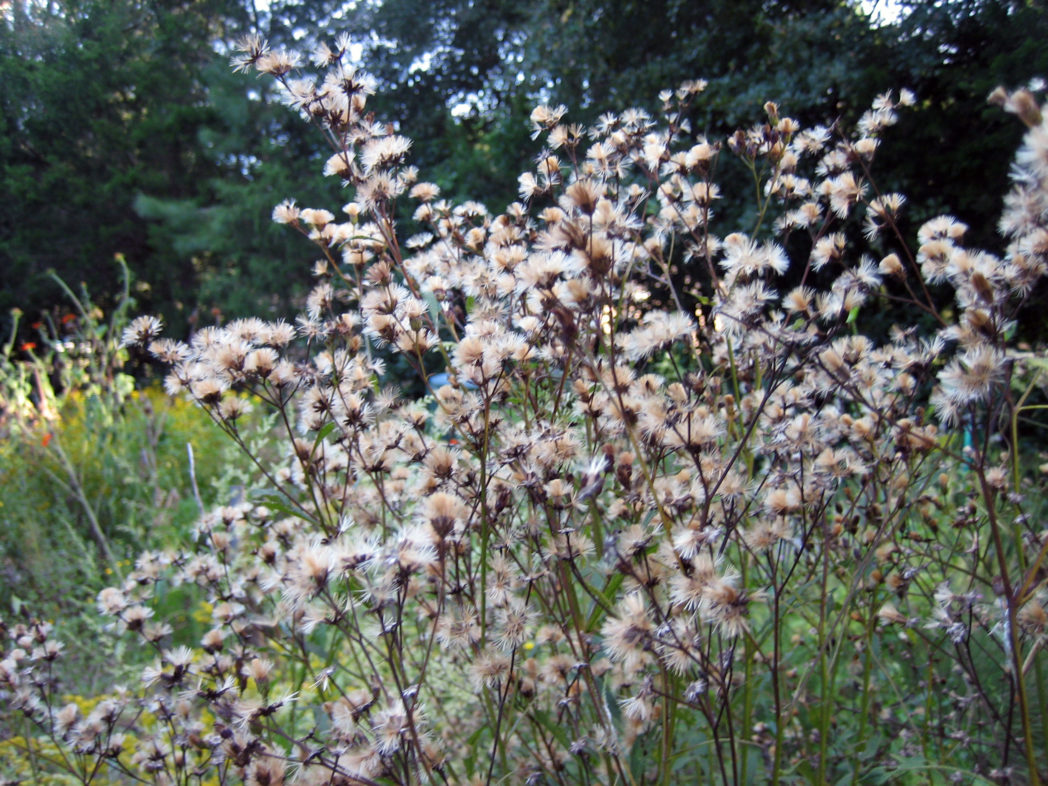Advice on fall garden maintenance and seed collecting
by Claudia Larsen
‘Tis the season for seed collecting. As you return to the garden after the last two months of unbearable heat, biting bugs and sweat, you’ll probably encounter a lot of overgrown stems. Cut those back to their base to freshen up the plant for winter. Trailing species, such as Dune sunflower (Helianthus debilis) and Blanketflower (Gaillardia pulchella), can also be whacked into submission and will probably bloom again by late November.
As you remove debris, why not nip the seedheads into brown bags? Most wildflowers with cone-shaped seedheads, such as Softhair coneflower (Rudbeckia mollis) and Purple coneflower (Echinacea purpurea), are easy: Simply wait until they are very brown and dry, then tap a few heads to see if any tiny seeds are dislodged, or pry out seeds with your fingernail or a pointed tool. Wildflowers with larger flowerheads, such as ironweed (Vernonia spp., pictured) or goldenrod (Solidago spp.), are ready to collect when seedheads expand to release their fluffy progeny to the wind. Check daily or they may be dispersed without your permission.

Photo by Claudia Larsen
Here are a few more tips on collecting seed:
- Don’t collect too early in the morning or after rain when seedheads are wet. Dry seedheads are essential to avoid mold and rot. You can keep seeds in bags for four to six weeks as needed. Extended storage is better done in refrigerated, air-free containers.
- You don’t need every seedhead on every plant unless you’re starting a nursery! There were more than 50 seedheads on each of my softhair coneflowers, and I only need 20 to 30 cones to resupply my nursery for next year.
- You may need to dissect some wildflower species to determine what and where the seed is. For example, Salvias keep their shiny black seeds tucked into a tube that forms on the old flower stem. Finding them is like playing hide and seek with Mother Nature.
- You can process rough seedheads by hand, but if that doesn’t fit your time schedule, the whole caboodle can be pulverized with a rolling pin or another implement before dispersing seeds to the ground. Just consider the extra non-seed parts as free mulch. Check out “Fall is for Planting” for more tips on fall planting.
